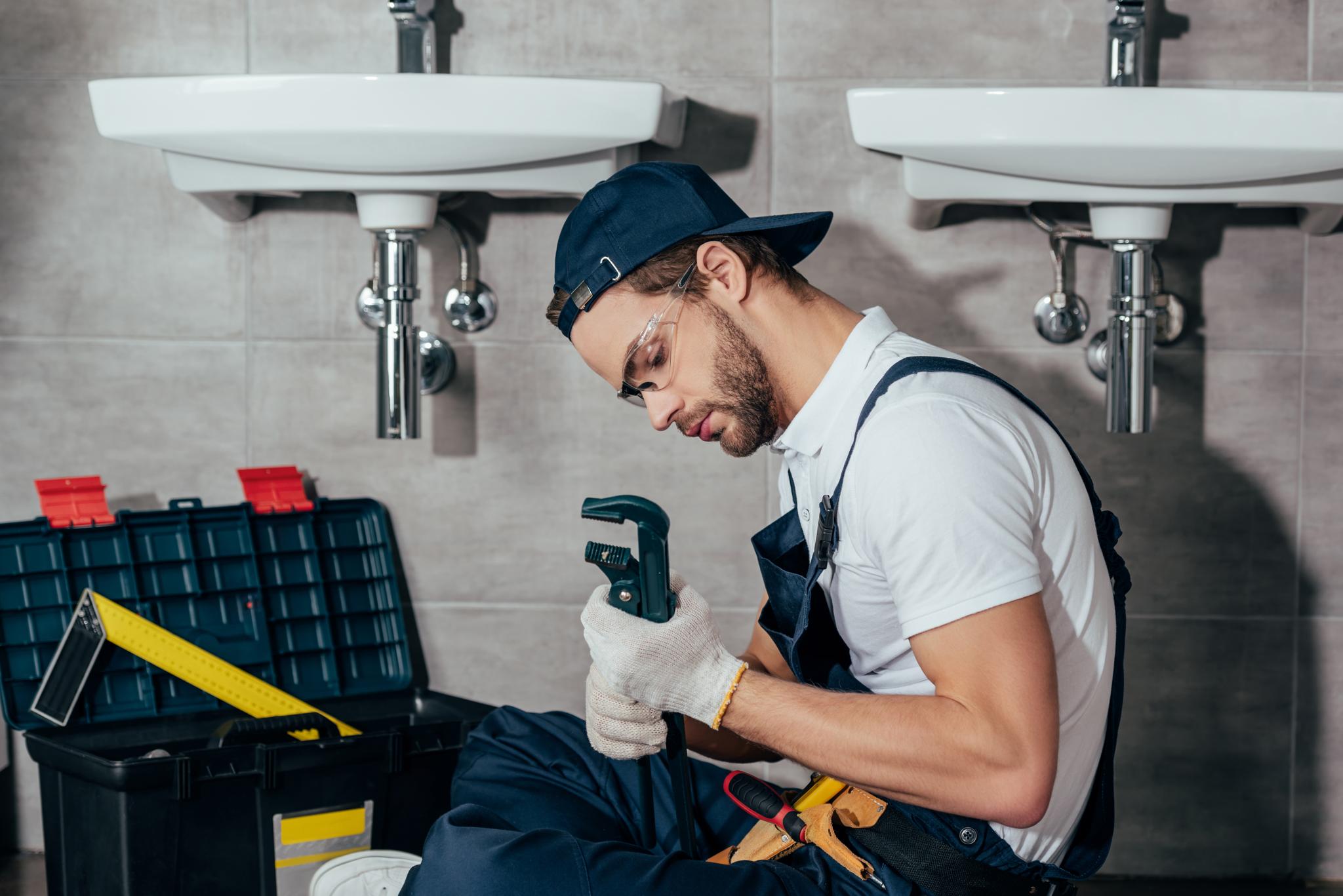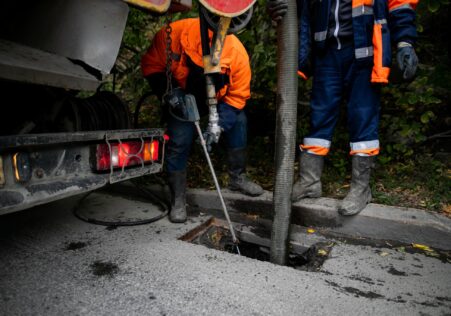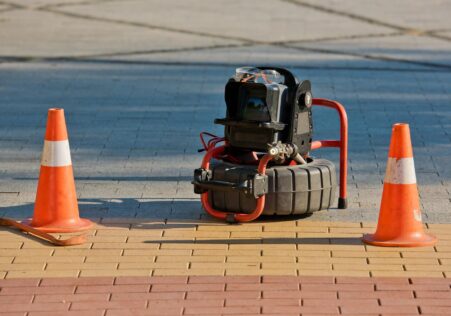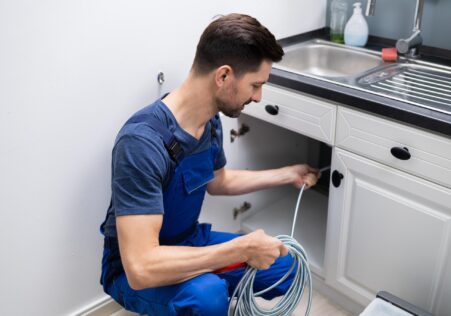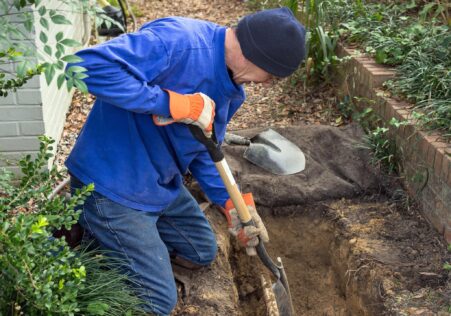What to Do When Your Toilet is Blocked: A Step-by-Step Guide

Toilet blockages can occur anytime and are a common problem for households. It’s unpleasant, messy, and inconvenient and requires immediate attention. However, you don’t need to call an emergency plumber right away. In this blog post, we will guide you through simple steps to unclog your toilet in no time.
Key Takeaways
- Toilet blockages are easily remediated using simple tools and techniques such as plungers, baking soda
The tools you’ll need
Before we start it’s important to be prepared with these tools:
- Rubber Gloves
- Plunger
- Baking Soda and Vinegar (Optional)
- The Hanger for Wire Coats or the Plumber Snake (Optional)
Step 1: Close the supply of water valve.
The first thing you need to do when confronted with a blocked toilet is turning off the valve for water flow on the toilet. This will ensure that no water will enter the tank while you attempt to clear it. The valve usually is situated near in the middle of the tank on one side.
Step 2: Protect yourself by wearing rubber gloves.
Hands must be protected from potential bacteria or germs present in your toilet bowl by wearing rubber gloves prior to using any tools that help in unclogging.
Step 3: Use a plunger.
A plunger is without doubt the most efficient method for cleaning toilets that are blocked. Begin by pressing down on the plunger until air is released, then press firmly over the hole in your toilet bowl. Then, start to plunge quickly up and down for about 20 minutes. The suction caused by plunging back and forth will help remove any blockages.
Tips:
- Be sure to use a powerful but controlled movement.
- Cover holes around sinks or shower drains if near to stop the pressure of air from escape as you plunge.
Step 4: Make a baking soda and vinegar in a mixture.
If plunges don’t work you can try this other method Pour half a cup of baking soda and a cup of vinegar into the toilet bowl. Let the mixture sit for about 15 minutes. It may fizz but when it ceases to fizz then pour boiling water down (not boiling) to clear the obstruction.
Step 5 5. Use a wire coat hanger or a plumbing snake.
If both plunging and baking soda/vinegar methods have failed and you are in need of a solution, it’s time to use a wire coat hanger or plumbing snake. Make sure you straighten your coat hanger’s cord until you have a thick, thin wire that has an angled hook on one side or it as a plumbing snake that was specially designed to clear drain clogs. Insert the tool into the drain hole on your toilet, and twist around, twist, push at the same time until you sense resistance. this is where the blockage typically occurs. Make an effort to break the blockages by using a back and forth motion without causing damages in your pipe.
Note:
- Do not overdo pulling or pushing actions as they could result in more damage.
Step 6: Turn on the water supply and test the results.
Once you’ve eliminated any blockages, it is essential to turn on the valve for water flow behind your toilet bowl again. After that, flush it a few times to make sure that all water flows smoothly now!
| Tools | Description |
|---|---|
| Rubber Gloves | Hand protection from potential bacteria or germs present in the toilet bowl. |
| Plunger | Most effective tool for clearing up blocked toilets. Press firmly over the hole in your toilet bowl and plunge vigorously up and down for about 20 seconds. |
| Baking Soda and Vinegar | Mixture to use if plunging doesn’t work. Pour half a cup of baking soda and one cup of vinegar into the toilet bowl. Let this mixture settle for about 15 minutes, then pour hot water down (not boiling) to flush out the blockage. |
| Wire Coat Hanger or Plumbing Snake | Tools to use if both plunging and baking soda/vinegar methods have failed. Straighten the wire coat hanger until you have a long thin wire with a hook bent at one end or use the plumbing snake, which is designed specifically for clearing drain clogs. |
Frequently Asked Question
How can I tell whether my toilet is clogged?
A obvious symptoms of a blocked toilet is when water levels rise to the top after flushing. You may also notice that the water drains slowly or you hear the sound of gurgling from the toilet.
What can I do if my bathroom is blocked?
If you believe your toilet is blocked be sure to avoid flushing it in the future as this could cause flooding. Instead, turn off your water source valve that is behind the toilet, and make use of a plunger and remove any blockages. If that doesn’t work then call Local Blocked Drains Sydney for professional help.
How can I stop my toilet from getting blocked?
Yes! There are many actions you can take to prevent your toilet from becoming blocked. One of them is to avoid the flushing of non-degradable things like sanitary products, wet wipes or cotton wool in the toilet. Avoid the practice of pouring oil or grease down the sink which can solidify and block pipes.
What is the best time to call an experienced plumber to fix a blocked toilet?
If you’ve tried plunging your toilet but it still does not unblock, or you suspect that there’s an issue in the plumbing system, causing frequent blockages, it’s time to contact an experienced professional plumber such as Local Blocked Drains Sydney . We have years of experience with various plumbing issues that we can quickly detect and fix any issues with minimal disturbance to the home.
Do I need to schedule my drains cleared?
It is recommended that you get the drains cleaned out by a professional like Local Blocked Drains Sydney every 1-2 years. This will help prevent blockages and help keep your plumbing system in good working order. If, however, you often have problems with drains blocking or slow draining of water despite being careful to not block them, then cleaning your drains every year could be beneficial.
These procedures are fairly easy to apply and the majority of these items are available in homes. If you’re facing a blocked toilet, prior to getting anxious after trying all the strategies, you should contact Local Blocked Drains Sydney ‘s expert plumbers located in Sydney , if you’re searching for professional assistance for your blocked toilets.
Additional Information
- The Ultimate Guide to Drain Clearing Services
- Why You Should Choose CCTV Drain Inspection to Identify Root Infiltration in Your Plumbing System
- The Importance of CCTV Drain Inspections in Preventing Expensive Property Damage
- Prevent Expensive Repairs with Regular Drain Maintenance
- The Importance of Regular Pipe Relining for Homeowners
- CCTV Drain Inspections: Why They are Crucial in Detecting Drain Blockages
- Why CCTV Drain Inspection is Essential for Maintaining Clean and Healthy Environment?
- Is It Time for a CCTV Drain Inspection? Here's What You Need to Know
- Say Goodbye to Messy Plumbing Repairs with Trenchless Pipe Relining
- Reducing the Risks of Drainage Problems: How CCTV Drain Inspection Can Help


